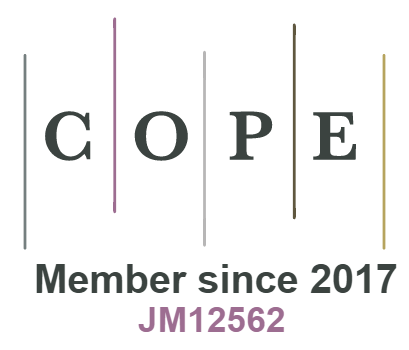Development of an Empirical Model for the Wear Rate of Contact Bearing Materials Using a Standard Pin-On-Disc Test
DOI:
https://doi.org/10.18034/ei.v6i2.230Keywords:
Wear Rate, standard pin-on-disc test, Contact bearing materials, applied load, rotational speed, sliding distance, material typeAbstract
The wear rate for contact bearing materials is studied as a function of a number of potentially influential factors, including applied load, rotational speed, sliding distance, and material type. A standard pin-on-disc test is used to conduct this study. Two levels of applied load (20 and 10 N), rotational speed (100 and 200 rpm), sliding distance (150 and 450 m), and material type (AISI 440C and AISI 420 martensitic stainless steel) were tested. Tests is run according to the design of experiments (DOE) methodology. Experimental results are analysed based on the analysis of variance (ANOVA) approach in order to determine the factors that have a significant impact on the wear rate. An empirical model is developed to fit the true relationship between wear rate and the significant factors in the case AISI 440C and AISI 420 materials. Finally, the morphology of the worn surface is studied using SEM and EDX images.
Downloads
References
Andersson J. (2012) Modelling of wear and tribofilm growth, Lule˚a tekniska universitet.
Andersson J., Almqvist A., and Larsson R. (2011) Numerical simulation of a wear experiment. In: Wear 271.
Berglund K. and Shi Y. (2017) Friction and Wear of Self-Lubricating Materials for Hydropower Applications under Different Lubricating Conditions, In: Lubricants 5.3.
Blau P. J. (2015) How common is the steady-state? The implications of wear transitions for materials selection and design, In: Wear 332.
Boher C. (2009) A wear model based on cumulative cyclic plastic straining, In: Wear 267.
Cavalieri F. J., Zenklusen F., and Cardona A., (2016) Determination of wear in internal combustion engine valves using the finite element method and experimental tests. In: Mechanism and machine theory 104.
Chongyi Ch., Chengguo W., and Ying J. (2013) Study on numerical method to predict wheel/rail profile evolution due to wear, In: Wear 269.
Wang Y., Stephen M., and Hsu (1996) The effects of operating parameters and environment on the wear and wear transition of alumina, Wear 195.
--0--
Published
Issue
Section
License
Engineering International is an Open Access journal. Authors who publish with this journal agree to the following terms:
- Authors retain copyright and grant the journal the right of first publication with the work simultaneously licensed under a CC BY-NC 4.0 International License that allows others to share the work with an acknowledgment of the work's authorship and initial publication in this journal.
- Authors are able to enter into separate, additional contractual arrangements for the non-exclusive distribution of the journal's published version of their work (e.g., post it to an institutional repository or publish it in a book), with an acknowledgment of its initial publication in this journal. We require authors to inform us of any instances of re-publication.









